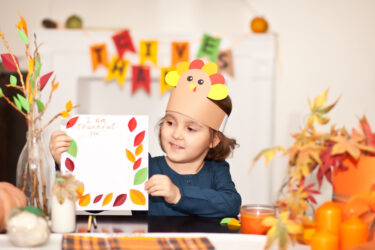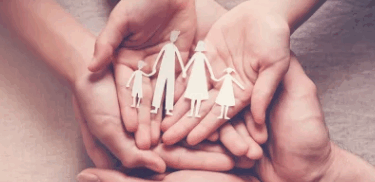The Rockwellian image of a soft, fluffy puppy donning a red bow under the Christmas tree certainly has its charm. But if you’re thinking of a puppy for Christmas, you might want to think again.
“First, let me say that I discourage anyone from ever getting a dog (or other pet) for anyone as a surprise gift,” says Shannon Dunhoft, owner and trainer of Loyal Loved Rescued Canine Obedience, a Northern Kentucky based business that offers classes, in-home training and other services. “A dog is a commitment — a several year commitment. And if all people involved didn’t make the decision together, it often ends poorly for the dog. Statistics show that dogs given as ‘surprise’ gifts often end up returned to shelters/rescues within a couple of months. Dogs are not gifts — dogs are a change in lifestyle that everyone needs to agree on in order for the relationship to be a success.“
The Humane Society, AKC, PETA, dog behavior experts and breed rescue groups all agree that puppies shouldn’t be given as Christmas gifts, and it’s better to bring a new puppy into the home during a less emotionally charged time of year. Says Lisa Desatnik, dog and pet trainer for So Much PETential, “Holidays can be stressful for a dog.” She adds that a new puppy requires crate training, potty training, and socialization — all of which a family may not have time for during the holidays. Inconsistent attention doesn’t set up your new family member for success. “At Christmas, puppies left alone will find their own solution to entertaining themselves,” says Desatnik, “and we may not like their solutions!”
If your family is set on bringing the spirit of a puppy into the spirit of Christmas, consider the approach of the Simmons family. “Don and I wanted our kids to experience the joy and love of a family dog,” says Darla, mom to 11-year-old Hailey and 8-year-old Zack. “I always had dogs growing up and remember the amount of time they take — especially when they are puppies.”
Simmons decided to incorporate the family puppy into their Christmas with a variety of dog supplies wrapped and placed under the tree with the kids’ names on them. “We bought a leash, collar, a few toys and a book on different dog breeds,” Simmons says, adding, “and, yes, they were both excited thinking there was a puppy hiding somewhere in the house!” Instead of a hiding pooch, the kids were told the family would be getting a puppy after the holidays, and it would be decision everyone in the family made together. “Hailey and Zack were excited about being a part of the process and learning about different dog breeds, and it gave them something to look forward to after the holidays,” says Simmons, whose family now includes a happy 1-year-old beagle named Max.
It’s best to get your new puppy when you can focus on him. Desatnik suggests an approach like the Simmons family — giving your children books on different kinds of dogs at Christmas, which opens up the conversation about what it means to be a good owner and a good friend to your pup. “The holidays are a wonderful time,” she says. “January is such a lull. It gives you something to look forward to. It gives you time to really think it through and educate your kids.”
The Doggie Decision: What Age is Best for Your Child?
No matter what time of year your family decides to adopt, you’ll still need to consider the best age for your child, financial commitments, and housebreaking and training.
Dunhoft says to adopt when kids are old enough to be a part of the decision making. “I encourage people to wait until their children are old enough to understand the right way to interact with a dog. Young children lack fine motor skills and may pull tails, ears, lips, etc. If you are looking to add a dog and your children are under the age of 5, I would consider an adult dog that has grown out of the puppy/nipping stage — and one that has been exposed to children. A rescue dog is a good place to start as they live in foster homes and their foster has most likely had the opportunity to evaluate them with children.”
Desatnik offers a class specifically designed for ages 6 – 10 called My Dog’s Superhero, during which kids learn how dogs communicate, how to be a good dog teacher and more. She says that there’s no real “right age” for getting a dog, but that instead, it’s more about the child’s maturity level.
Make sure your family is truly ready for the commitment of dog ownership. Do your research, make sure you can afford it, and be ready to take on the responsibility — and that’s a sticky point. A common mistake parents make is getting a dog with the hope of instilling responsibility in their children. The fact is during a dog’s 10 – 15 year lifespan, a child will go through myriad growth and development phases, and, in most cases, his involvement with the dog will wax and wane.
“In all honesty, it is never fair to expect that they take on all of the responsibility of taking care of the dog,” says Dunhoft. “Is it reasonable to expect them to help? Yes. But, as a parent, you will need to be ready and willing to take responsibility as well — even if that means all of the responsibility. If you are not willing to take on the responsibility yourself, you should reconsider adopting a dog.”
Picking the Right Puppy
Successfully picking the right puppy takes a lot more than falling in love with a pretty face.
Desatnik says to first analyze your family’s lifestyle. Are you active, homebodies or somewhere in between? Dogs that require a lot of activity match up well with outdoorsy, active families. What kind of space do you have? Determine how much time you have each day for your furry friend’s needs. Some breeds require daily grooming while others only need a weekly brushing. Dogs need to be exercised daily as well.
“If your kids are in five different sports and you are gone the majority of the time, I would discourage you from getting a dog until your schedules calm down,” says Dunhoft. “A bored dog is a destructive dog.”
When your family has made a list of what you are looking for in a dog, Dunhoft suggests heading to the local shelter or rescue. “Lucky Tales Rescue or PawPrints Animal Rescue is a great place to start. They work tirelessly to match people to the right dog so that it is a lifelong partnership,” she says. Volunteers will help find a dog that matches your family’s lifestyle, and while the process might take a bit longer, it will be worth it in the end.
Training Your Kids
Just as you’ll set boundaries for your puppy, don’t forget to go over a few do’s and don’ts with the kids. Here are some basic rules according to Dunhoft:
- Do educate your children on the proper way to interact with a dog and lead by example.
- Do involve kids in the care of the dog.
- Do give your dog a safe space to escape that is off limits to children.
- Do encourage your children to pick up their toys – puppies can’t tell the difference between what is theirs and what is yours!
- Don’t let kids pull ears, tales and faces.
- Don’t let kids tease the dog by taking food, toys, etc. away from him.
- Don’t let your kids lay on the dog.
- Don’t let your kids feed the dog “people” food.
- Do teach kids about how to read a dog’s body language and how to respond.
Desatnik advises parents to always supervise when young children and puppies are together. “Parents should be able to intervene at all times if things aren’t going right,” she says. While a parent might see that a dog is getting uncomfortable or overwhelmed, young children may not recognize the signs, and will need your guidance on respecting a dog’s need for space.
Love is the key to a great relationship with your family’s puppy. Dogs don’t ask for anything more than to be loved and played with, and the unconditional love they give in return truly makes them man’s best friend.
Be sure to head to our December giveaways, where you can register for Desatnik’s upcoming January class, My Dog’s Superhero!
Chad Young is the managing editor and arts/entertainment editor for Nashville Parent magazine.





